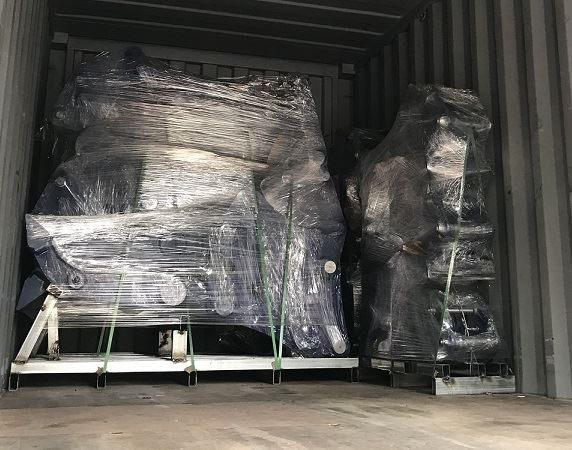Wheeled excavators are a variant of the popular crawler excavator, with a four-wheel-drive undercarriage replacing the latter's tracks. Planetary axles, which are designed to oscillate and allow the vehicle to navigate uneven terrain, are commonly used on wheeled excavators. The wheeled excavator's key advantage is its mobility, which allows it to be driven rather than hauled to a jobsite. When excavating and earth-moving, most versions have hydraulically extended outriggers to aid steady the machine.
The strong engine is certified to be fuel efficient and meets the most strictest pollution rules, resulting in lower fuel usage. Because of the big fuel tank and low consumption, the work period between refi lls is only two days. In comparison to the competitors, the Extended Maintenance System allows for longer greasing intervals on all pins. For simple access, all filters and regular fill points are grouped. For more efficient cooling and easy cleaning, the radiator and cooler cores are positioned side by side. Regular fills are made easier with the addition of a high-flow refueling pump with automatic cutoff.
Types of excavators
You might think that the only use of excavators is for efficiently digging up dirt for large-scale construction, industrial, or mining projects. While this understanding is not entirely wrong, one cannot deny that each industry sees to it that their excavators are specially manufactured and designed for their operations.
Excavation projects which focus only on the digging up trenches on the ground need not make use of larger machines, like dragline excavators. In much the same way, a dragline excavator would be highly underutilized if their purpose is only to dig up small amounts of dirt.
There exist different kinds of excavators in the market. For the sake of practicality and brevity, however, this portion will highlight only three types of excavators to better illustrate the distinction in their uses. These are: dragline, crawler, and suction excavator.
Dragline
Dragline excavators are most commonly used in civil engineering undertakings, as well as, surface mining. You could say that a dragline is one of the largest kinds of heavy equipment ever developed.
Basing on the name alone, the machine comprises a drag rope, large bucket, boom, driving motors, and a hoist rope. Aside from mining projects, draglines can also be used in the development of ports and harbors.
Crawler
Some of the primary uses of crawlers are for digging holes and trenches on the ground. Crawler excavators are generally considered to be smaller in size compared to the dragline excavator, but with specialized attachments, it can be considered as heavy machinery.
Aside from the construction industry, crawlers can also perform mining functions. It has also been utilized in agricultural and forestry operations.
Suction
Unlike the previous types of excavators, a suction excavation makes the use of a vacuum that can be used efficiently and safely excavating materials deep below the surface of the ground, without creating damage to the surrounding area.
Through a high-power and high-pressure airflow system, materials are swiftly gathered up through the attached nozzle.



